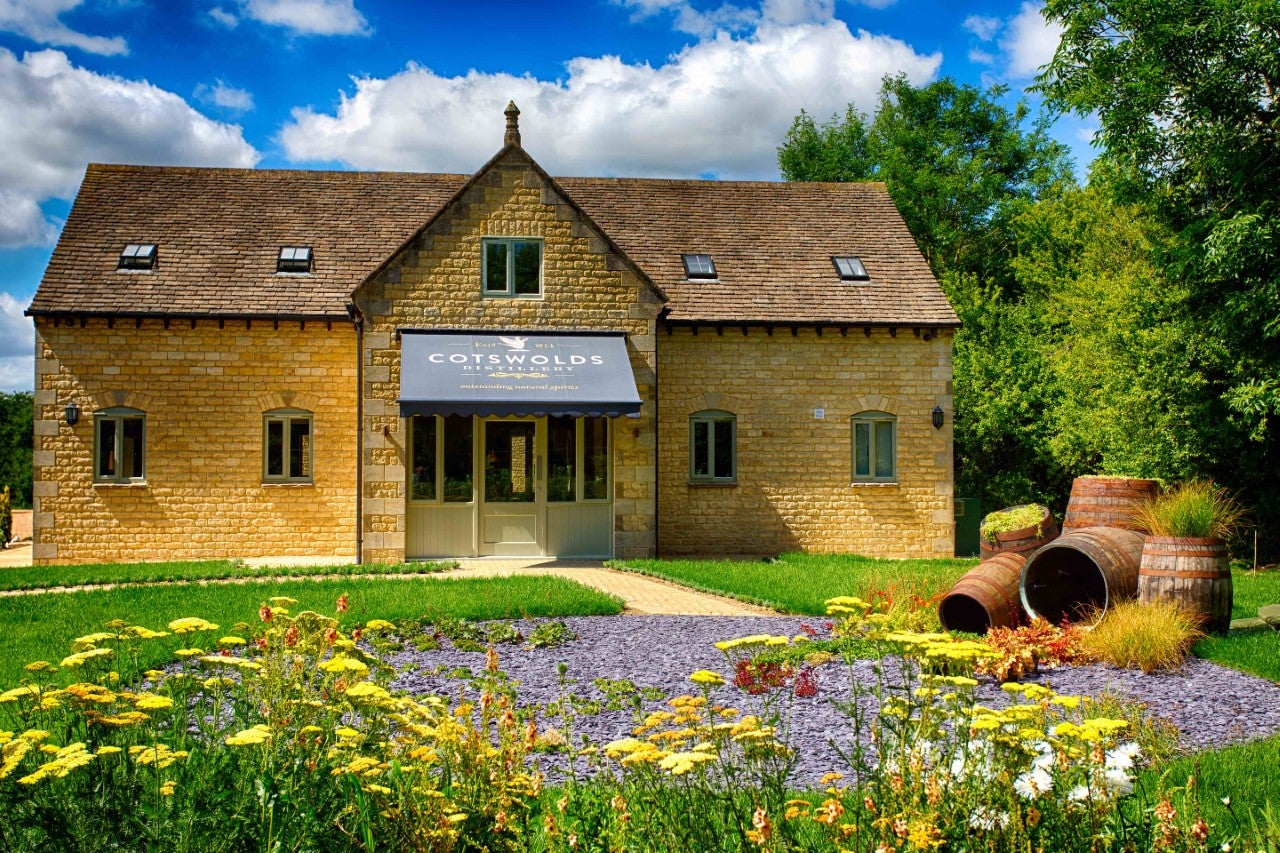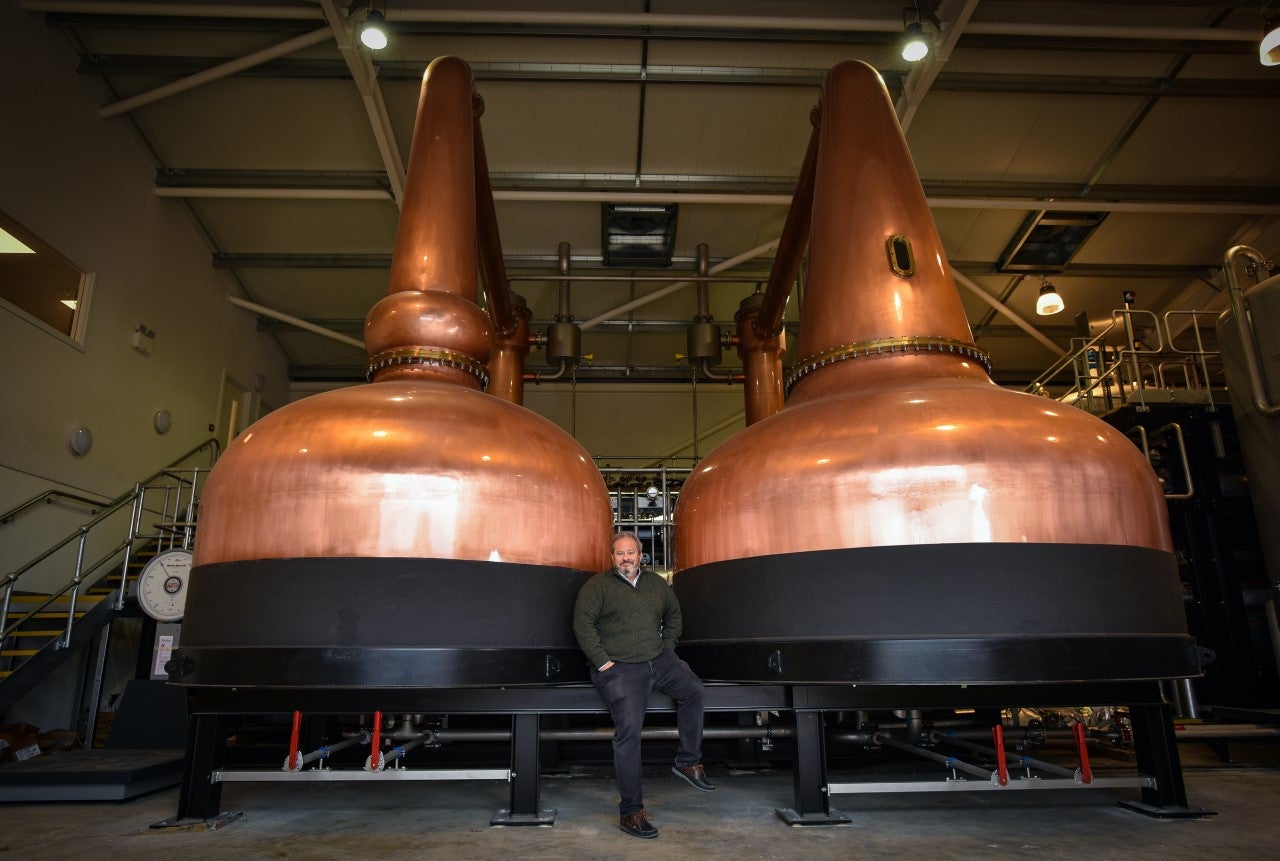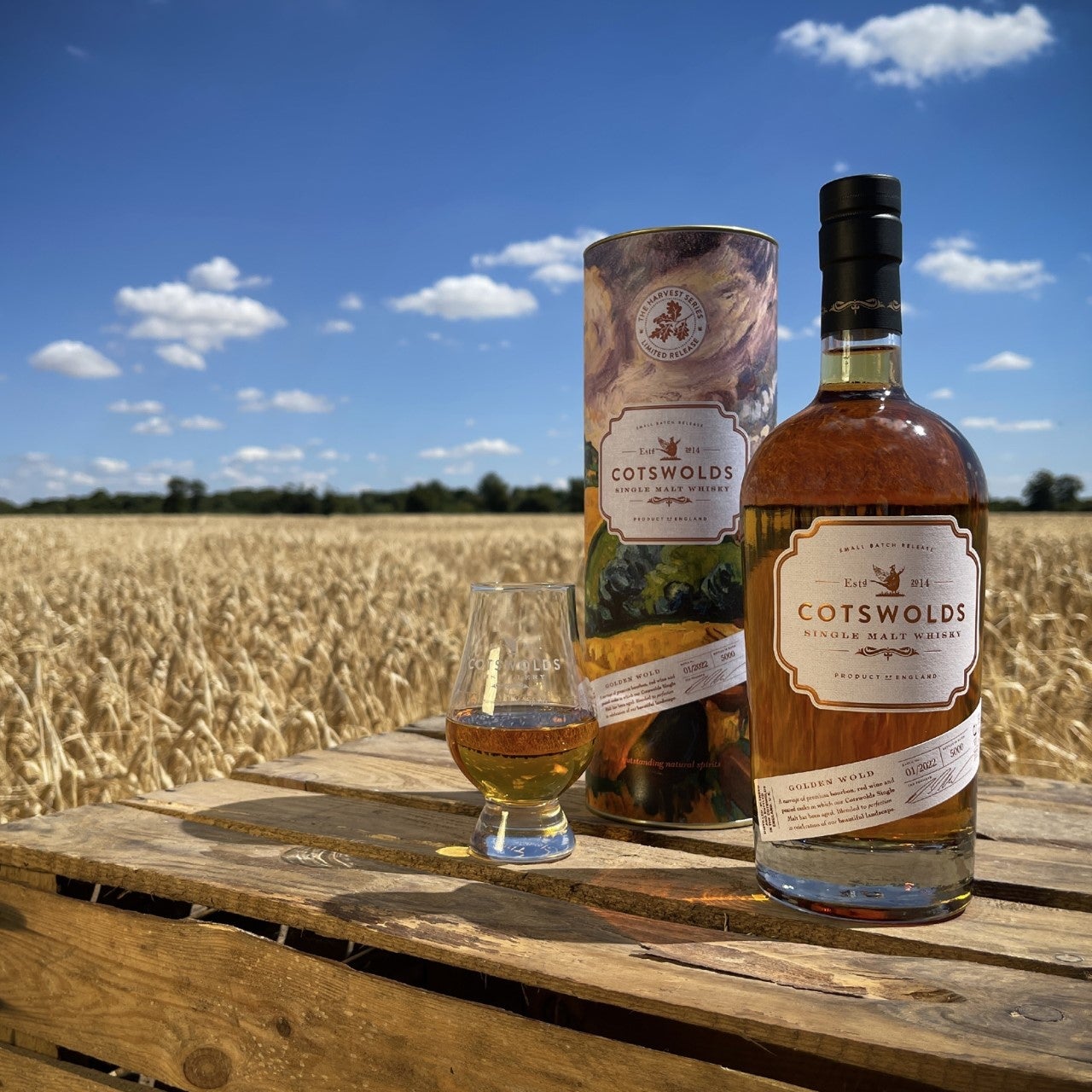‘A new way of looking at whisky’: The rise of English distilleries
From Durham in the northeast to Cornwall in the southwest, there are now more than 40 distilleries producing English whisky, writes Mick O’Hare


Have the English scotched the Scots? Will drinkers around the world soon be demanding an English and soda? There’ll be a few people, particularly north of the border, already turning their noses up at the very thought.
When I think of whisky I think of Speyside, Islay and the Highlands (despite it also having a natural home in Ireland, whiskey with an “e”). From the soft, honeyed flavours of Dalwhinnie to the smoky, phenolic peat of Lagavulin, to the fruity richness of Glenlivet. Think of oak casks that once contained bourbon, sherry or port, now filled with gently ageing spirit, resting silently in a dunnage atop an Atlantic-ravaged cliff or beside an idyllic loch.
However, a young pretender has recently arrived on the scene. And its home is more likely to be in the fens, downs or dales rather than astride a burn. English whisky is starting to make a name for itself.
In 1997, celebrated whisky writer Jim Murray was able to write this in his Complete Book of Whisky: “There is no such thing as English whisky, unless you consider adding water to whisky makes the town where it is added the heart of a whisky region. If so, Wellingborough in Northampton just about counts.” Murray was referring obliquely and sardonically to a bottling plant in the English Midlands where whisky was diluted down to the correct alcohol-by-volume percentage. And even as late as 2006 journalist, polemicist and noted whisky drinker Christopher Hitchens was able to refer to England as a “malt-free zone”.
However, strictly speaking, Hitchens was mistaken. The first modern English whisky distillery opened in 2003 when Hicks & Healey was established in Cornwall. They were followed in 2006 by The English Whisky Company which opened its St George’s Distillery in Norfolk. In 2009 the latter put on sale the first bottle of English-made single malt whisky for more than 100 years.
Both distilleries were actually reviving a tradition dating back to the 1800s. Brewing and distillation historian Alfred Barnard in his Whisky Distilleries of the United Kingdom published in 1887 lists huge operations based in Bristol, Liverpool and London. But the last of these, Lea Valley, closed in 1905 meaning there was no commercial whisky production in England for more than a century. Gin, traditionally the favourite spirit of the English, was quicker and cheaper to produce and, unlike whisky, it didn’t require long maturation in wooden barrels.
But now English whisky is back. And with a vengeance. Today’s distillers are at what is most often described as the craft or artisan end of the market. While there are no large-scale producers such as those found in Victorian times, their number is growing rapidly.
Michael Fichtner is the whisky sommelier at the Coburg Bar in London’s Connaught Hotel. He says “there is a boom in English whisky which parallels a wider increase elsewhere. Whisky is seen as both trendy and inclusive and distilleries are opening all over the world. English whisky is a part of that with the advantage of prime conditions – climate and whisky-making know-how on its northern doorstep.”
From Durham in the northeast to Cornwall in the southwest, there are now more than 40 distilleries producing English whisky, much of it from malt. You need grains to make whisky. Wheat, rye or corn can be used but malt whisky is made solely from malted barley. The grains are soaked in water until they germinate, then dried and milled before hot water is added, converting the starch in the barley into sugar, which is fermented and then distilled. A single malt is the product of just one distillery, meaning it is not blended with the products of another. Single malt whisky is often considered the pinnacle of the whisky distiller’s art.

Usually twice distilled, as is most Scottish whisky (Irish whiskies were always traditionally distilled thrice), England’s single malts are coming on stream. To qualify as whisky the raw spirit must be aged for at least three years in wooden casks – in Scotland these must always be oak and often have previously contained another product such as bourbon or sherry. Five years is better, 10 even more so. The maturation period rounds off any harsh edges and softens the finished product. This explains why many of the new English distilleries produced either vodka or gin (or both), distilled and bottled within the space of a few weeks, to tide them over until their whisky could be released onto the market. “Gin was our love child,” jokes Dan Szor, founder of the Cotswold Distillery. “It was our unexpected but happy arrival while we waited for its sibling whisky.”
English distillers may have to take into account that warmer temperatures down south mean that they lose five per cent of their output to evaporation – the so-called angels’ share – whereas in Scotland it is less than half that. On the plus side, the whisky matures more quickly.
And now some of these new upstart distillers from the south are matching the best. “Despite being a comparatively young industry, all the whiskies I taste punch well above their weight,” says Fichtner. He singles out Bimber in London for its “old-fashioned, bold single cask malts” and Cotswold for its small-batch whisky matured in sherry casks. “It’s a stand-out,” he says. “Perfect for Christmas”. Unsurprisingly, Szor is also proud of Cotswold’s output. “I bet my life savings on whisky,” he says. And now it seems it’s paying off. “The reception for Cotswold’s first, and indeed subsequent, whiskies was amazing,” he adds. Cotswolds Distillery Founder’s Choice Single Malt won the 2019 World Whiskies Award for best English single malt. Other awards have followed.
“Innovation is a key factor in the rise of English whisky,” says Fichtner. For example, Scotch whisky producers must use oak casks to mature their spirit but English distillers can experiment with different wood types.
“Because it’s such a young industry in England distillers are not bound by regulations like the established countries. Apart of the requirement of being aged for a minimum of three years there are no boundaries to what can and cannot be called English whisky. This definitely enhances creativity,” says Fichtner. While he says that most English distilleries take their inspiration from Scotland, double-distilling malt and ageing in oak, others branch out. He cites the Oxford Artisan Distillery for breaking with the norm and “creating contemporary rye and corn whiskies – their “Red Red Rye” is so fruity compared to the spicy American ryes on the market”.

English gin has had its boom time, now it seems it’s the turn of whisky. Output is expected to continue growing, with bottle sales in 2023 increasing by more than 400 per cent from 2019. London welcomed its first whisky distillery since the closure of Lea Valley in 2011 when the London Distillery Company opened its doors in Bermondsey. It’s since gone into administration but many more have replaced it. Even traditional beer brewers such as Adnams in Southwold, Suffolk are getting in on the act. Its single malt whisky was released in 2014. Meanwhile, multinational drinks corporations are taking note. Diageo – owner of Smirnoff vodka, Guinness and Gordon’s gin as well as numerous Scotch whisky brands – has recently invested in the Oxford Artisan Distillery.
But Toby Whittaker of Whittaker’s Gins in North Yorkshire adds a note of caution. He suspects the growth of the English whisky market will be slower than that of gin, although as a consequence the finished product will be of higher quality. “It’s an exciting time for craft spirits,” Whittaker told the Yorkshire Post. “And a lot of people have jumped on the gin bandwagon, some of it good, some not so good. But with whisky the time, effort and money you have to invest before you see any return means you really have to be committed to creating a quality product.”
England’s total of 40 distilleries is small fry though, when compared to the 140-plus in Scotland – and that’s before size and output are taken into account – or the 740 registered in the US. Scottish whisky is exported to more than 180 countries bringing in around £4.5bn to the Scottish economy, Meanwhile English whisky sales total only 2 per cent of that figure. “Exports are still in their infancy,” says Fichtner. “And unfortunately due to Brexit sales to the EU have fallen dramatically. On the upside the US-UK tariff resolution created an increase in exports to the United States.” Szor agrees, saying Cotswold’s exports are good, but could be better. “Only 20 per cent of our revenue comes from overseas sales, but we are exporting to France, Germany, the US and parts of Asia, including China.”
In late March, an English whisky won the title of the planet’s best single malt in the World Whiskies Awards. The Lakes Distillery’s Whiskymaker’s Reserve No 4 was judged in blind tasting by the panel to be the best, beating off hundreds of entries from around the world. “It was quite a surprise,” says Fichtner, one of the competition’s judges. “Previous winners include heavyweights like Hakushu 25-year-old and Craigellachie 31-year-old so it was an eye-opener to see a humble, young whisky from England with no age statement taking the top spot.”
It’s youthful, exuberant, unpretentious and approachable. It’s not your dad’s whisky
The Lakes Distillery, housed in a Victorian farmstead on the shores of Bassenthwaite Lake in Cumbria, had already won the title of World’s Best Vodka in 2019, despite only being founded in 2011 and a bottle of its very first batch of single malt will now fetch almost £10,000 at auction.
Dhavall Gandhi was whisky director for The Lakes Distillery until late 2021 when he moved on to solo projects. He was born in a village near Mumbai in India, and studied corporate finance and economics in the US after which he started working for Ernst and Young. But a trip to the Maker’s Mark distillery in Kentucky changed the course of his career.
“That was it. An epiphany moment,” he told The Hindu in 2019. “I just packed up, moved to Scotland and to a postgraduate degree in brewing and distilling at Heriot-Watt University.” After working for Heineken, he took up a job at the Macallan distillery as a blender, studying how they used sherry casks to create their whisky. This knowledge of how wood infused with sherry acts on raw spirit is a skill he took with him when he moved to the Lakes Distillery in 2016 as master distiller and whisky director. “I think it raised eyebrows moving to such a small operation in England,” he recalls. “But they gave me carte blanche.” The move paid off. Reserve No. 4 is a single malt matured in a combination of sherry and wine casks and Gandhi describes it as “the whisky I always wanted to make”.
The total output of the Lakes Distillery is 400,000 litres a year, quite large for an English whisky producer but obviously dwarfed by the output of Scottish distillers. Glenmorangie alone produces 6 million litres every year. “But what English whisky makers can do,” says Szor, “is offering a whole new way of looking at whisky. It’s similar to the days when New World wines came to the fore, disrupting the European competition with juicy Australian shiraz and crisp New Zealand sauvignon blanc. English whisky offers a more deconstructed way of drinking this wonderful beverage, one that is far less bound up in tradition. It’s youthful, exuberant, unpretentious and approachable. It’s not your dad’s whisky.”

Largely with that ethos in mind England even has its own trade body. Andrew Nelstrop who runs the English Whisky Company is the chair of the English Whisky Guild. His organisation aims to promote and protect the “diversity and quality” of the many whiskies now crafted in England. “Currently English whisky is synonymous with creativity and innovation,” he says. “We want to maintain that and are applying for Geographical Indication status from the government.” Nelstrop wants to enshrine in legislation what makes English whisky different to some of its counterparts elsewhere in the British Isles.
So is scotch on the rocks? Certainly not. Scottish whisky is one of the finest drinks humanity has produced, English whisky is just a small but notable adjunct, and a welcome one at that. “Any form of friendly competition helps push the limits of what can be achieved,” says Fichtner. “Both England and Scotland will find new ways to attract a broader audience and cooperation is the best way forward. Demand is soaring for all whiskies. And the innovations introduced by English distillers can attract a new crowd of whisky drinkers.”
With the contemporary interest in spirits seeing no sign of receding as it rides on the back of the cocktail boom of the past decade, there is plenty of space for English to sit alongside Scotch and Irish without supplanting their noble history. “The Scots can sleep easy in the knowledge that their years of heritage and production skill will no time soon be usurped,” says Szor. In fact, he believes, the market is big enough to absorb the new wave of English distillers, which will only increase interest in whisky as a whole. “The Scots will be the biggest beneficiaries of that,” he adds.
But, as The Lakes Distillery’s Whiskymaker’s Reserve No 4 has proved, the very best whisky needn’t be distilled in a heather-fringed glen or beside a picture-perfect loch. The rolling hills, fells and wolds of England are, it seems, proving to be more than adequate.





Join our commenting forum
Join thought-provoking conversations, follow other Independent readers and see their replies
Comments